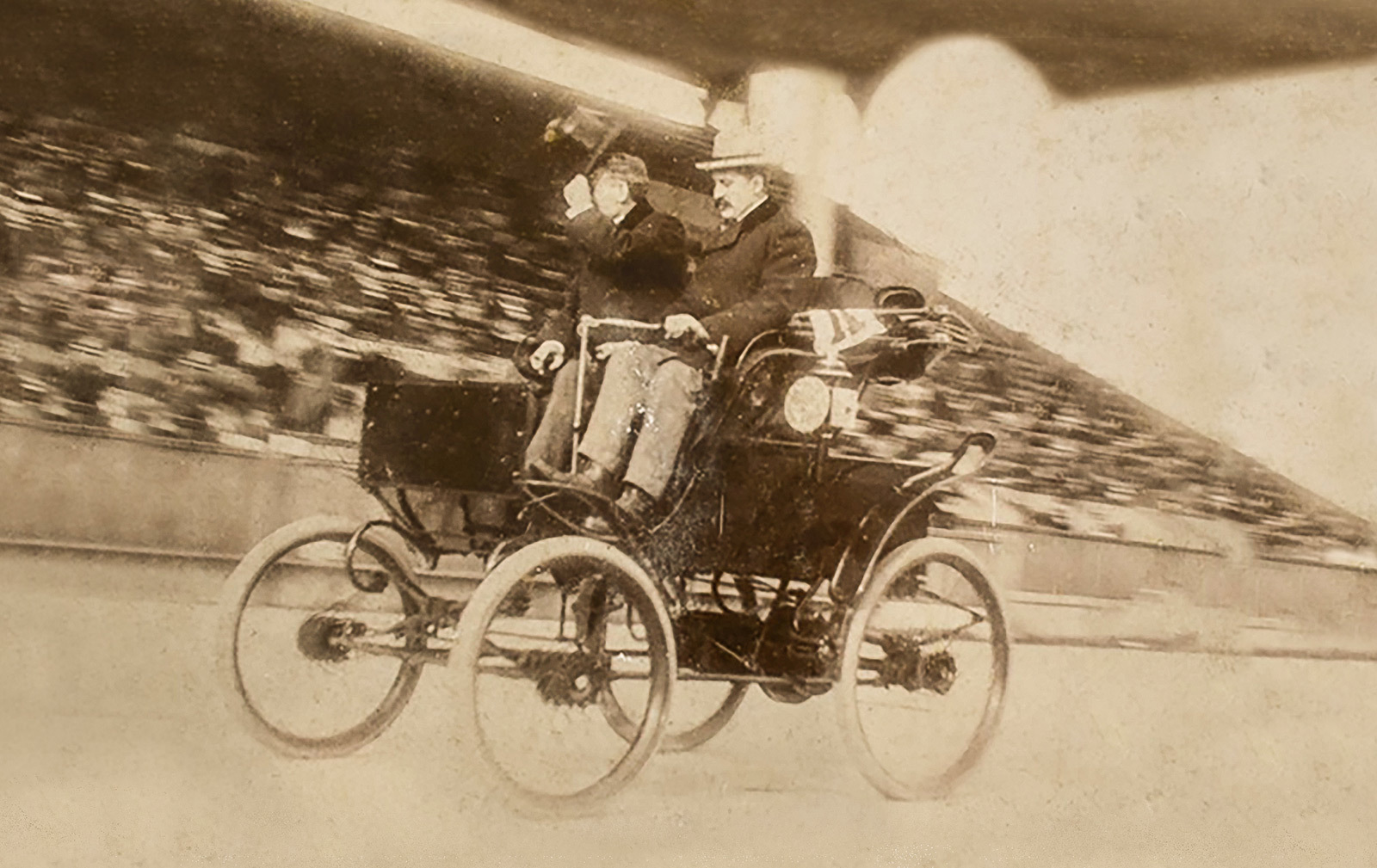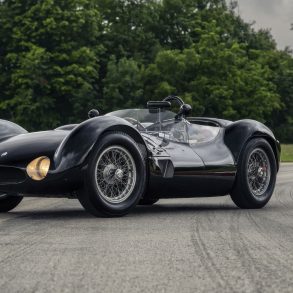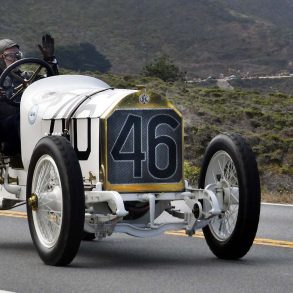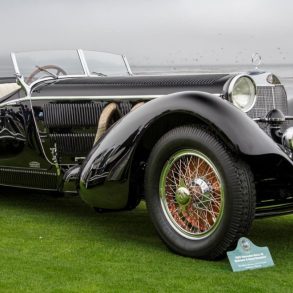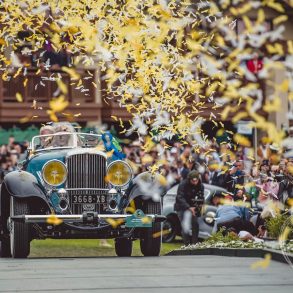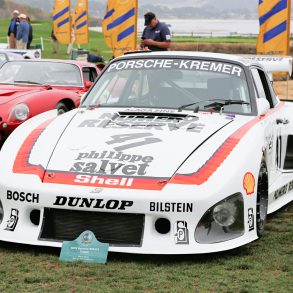Even as a boy, Richard Riker knew that his name had meaning. Back in the late 1800s, “Riker” was synonymous with electric cars.
Richard’s grandfather, Andrew Lawrence (A. L.) Riker, was the engineering genius behind some of the earliest such vehicles. He first sketched an electric-powered car in 1884—although it wasn’t until later that he began to bring his vision to life, initially adding motors to tricycles and paired bicycles and finally building a more formal four-wheeled car in 1895. The following year, Riker won what was perhaps the first US horseless carriage race around a track—at Narragansett Park in Providence, Rhode Island—and business took off.
He reported his first commercial sale in 1897, and he formally incorporated the Riker Electric Vehicle Company in 1899. By then two-seater runabouts, four-seater dos-a-dos, hansom cabs and even heavy trucks were rapidly emerging from the Riker factory in Elizabethport, New Jersey.

Richard Riker was not born until 1942, so he came of age when gas-powered cars held sway. But early on the morning of August 15, when the 70th Pebble Beach Concours d’Elegance opens to entrants, he will be driving onto the competition field in a Riker Electric prototype dating back to 1896.
Another Riker, a 1898 Phaeton raced by A. L. Riker to wins in some of the earliest sanctioned US auto races and later shown at the 1900 Paris Exposition, will also be on hand—as will a Baker Victoria that served four administrations at The White House, a rare Bailey notable for its extensive travels, an elegant Rauch & Lang owned by prolific inventor and electrical pioneer Thomas Alva Edison, a Milburn, and two Columbia models. These cars are all gathering for the first Early Electric Car class at Pebble Beach, a class first announced in the fall of 2019 and intended for the following summer but coming to fruition now.
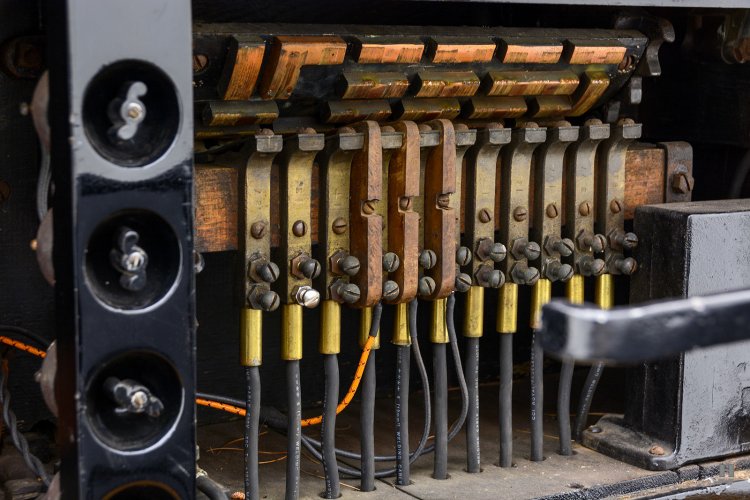
As these cars compete for awards on the Concours competition field, up on the Concept Lawn and in nearby manufacturing displays newer electric models and concepts will be showcased, much as Tesla made its public debut at Pebble Beach in 2006. History is coming around again.
In the early twentieth century, a nascent car industry was determining what would power most “motor cars”—an electric motor, a steam engine, or a gas engine. The former promised drivers a safer and easier means of starting a car, but power and range were greatly limited by the batteries then available. Meanwhile, several large crude oil fields came to light, wells were drilled, refineries were built, and then in 1901 Spindletop exploded. Suddenly it seemed the world was awash in oil—and soon the decision for gas power was made.
Well before then, A. L. Riker, could see the writing on the wall. He knew that gas would eventually win out. By the end of 1900, he sold his business to the makers of another electric car, the Columbia. He then developed a line of gas-powered cars for Locomobile, which was still building steam cars. His best-known creation is probably “Old 16,” the iconic 1906 Locomobile that won the 1908 Vanderbilt Cup. He went on to co-found the Society of Automotive Engineers, serving as its first president while Henry Ford was first vice president.
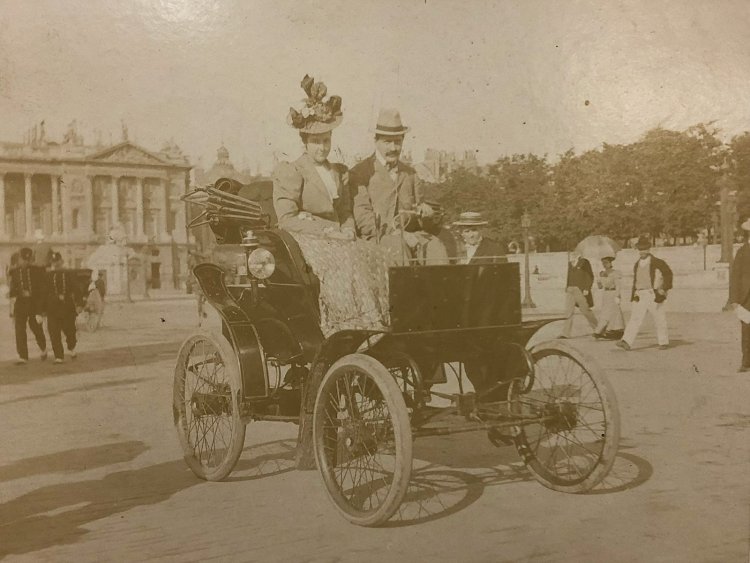
Richard Riker was born a dozen years after his grandfather died. By that time, the few Riker Electrics still in existence were to be found primarily in museums, including The Henry Ford, where the A. L. Riker’s personal cars had been donated, given his friendship with the founder.
For a time that seemed fine. The Rikers took pride in their legacy, but knew it was in the past.
Richard learned to drive in a 1958 Chevrolet Bel Air, and the first car he purchased was another Chevy—a 1952 two-door hardtop. Then, when he was in his late teens, his interest in electric cars was sparked during a trip to the old family home in Fairfield, Connecticut, where he and his father spent some time poring through the trove of records and mementos that his grandfather had stashed above the four-car garage. They even took a few photo albums and manuals home to study—somewhat fortuitously, for tragically the remaining historic items were lost when the garage burned to the ground soon thereafter.
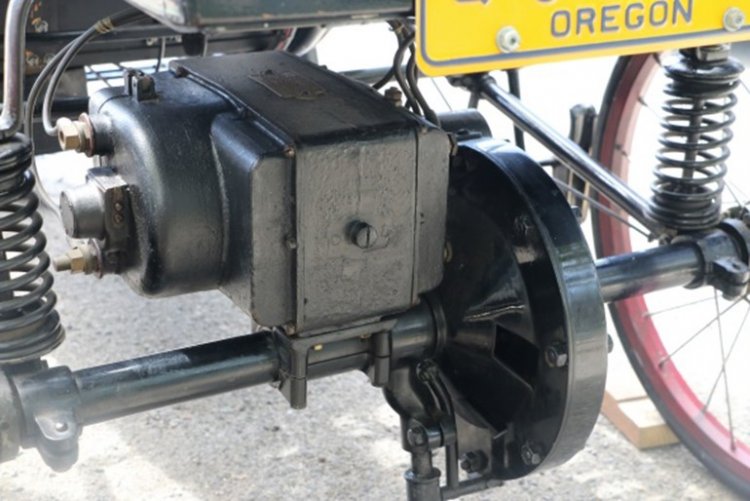
Richard has spent a good portion of the past several decades of his life trying to recover the family history—and the family cars—that were long lost.
“I want to find and preserve our history,” said Riker. “I think it’s fascinating. . . . and important.” He notes that he has been helped in that endeavor by other enthusiasts, particularly Bruce Duffie, the grandson of early Columbia Motor Car demonstrator Lawrence Duffie.
It was the early 1980s, while thumbing through a Hudson & Marshall auction catalog, that Richard spotted the Riker prototype—and his family purchased it. It remains in the family, under Richard’s care, to this day. They also recovered the 1898 Phaeton racer, but it has since passed into the hands of new caretakers, who will also be sharing it at Pebble Beach.
Come Concours day, next Sunday, Richard will be standing beside those two cars, proud to be bearing the Riker name.


